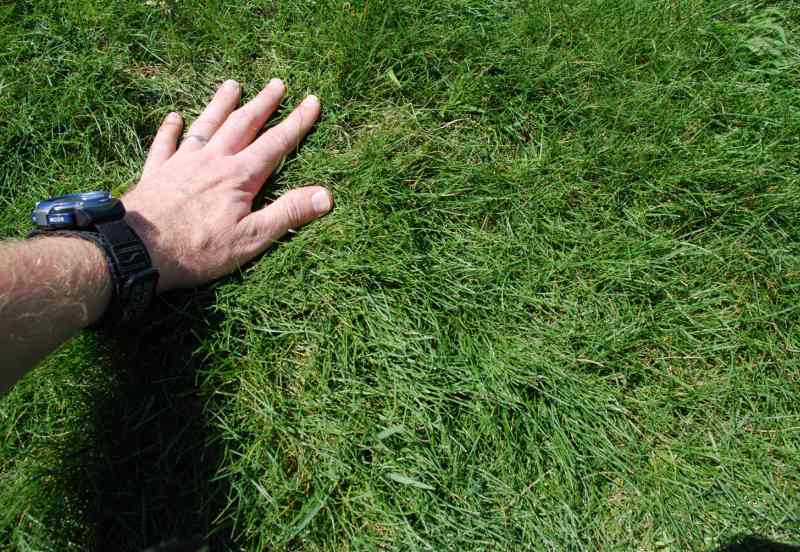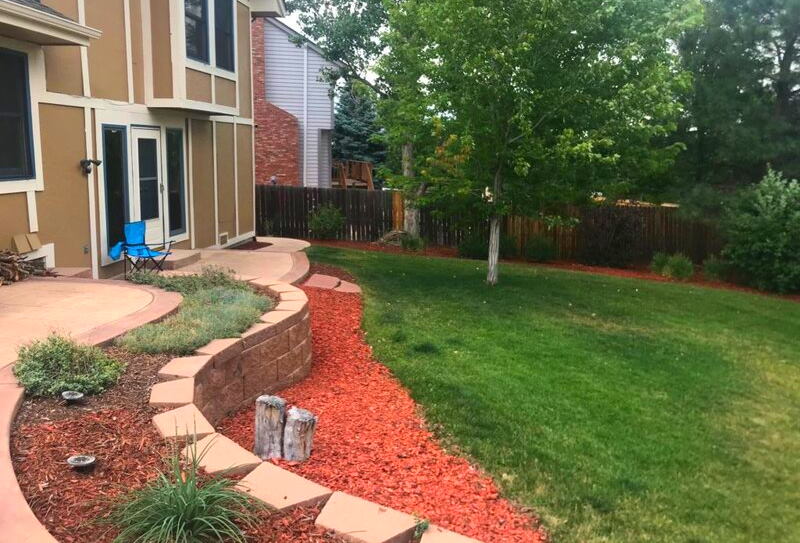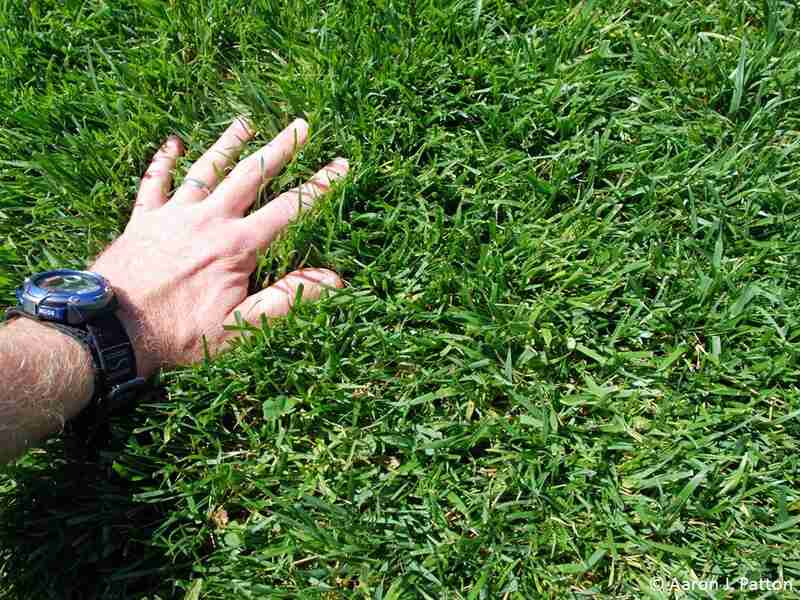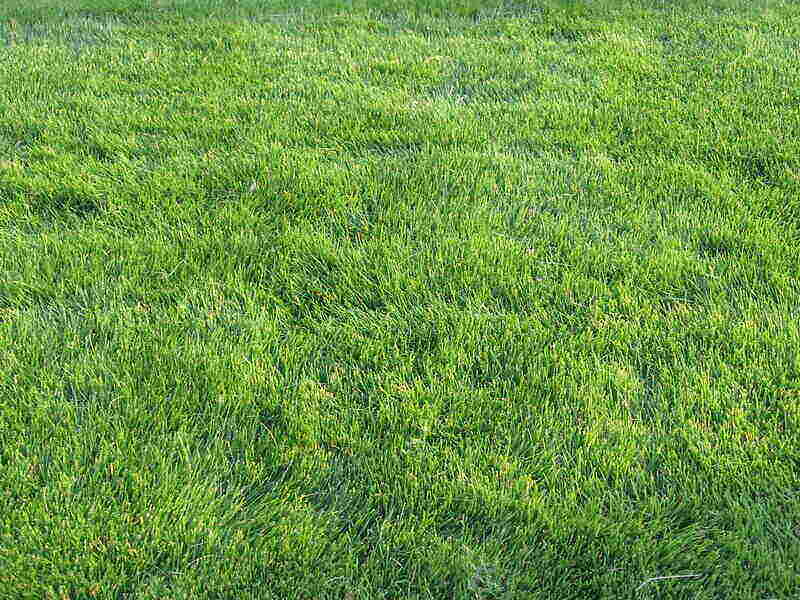5 Best Grass Seed Types for Massachusetts
BY NICKI DESTASI | JUNE 2ND, 2023 | LAWN CARE, MASSACHUSETTSYou can do a lot in Massachusetts – get a frappe, bang a uey into Dunks, catch a game at the Garden – but the best is hanging in your yard. Gardening, sunbathing, or tossing a pigskin is even better with a luscious lawn. Whether you’re living on the Cape, the Hub, or down the Pike in Western Massachusetts, choose one of the 5 best grass seed types for Massachusetts for a wicked awesome lawn.
In this article, we’ll cover:
- Warm-Season vs. Cool-Season Grasses
- 5 Grass Seed Types for Massachusetts
- FAQ About Massachusetts Grass Seed Types
- Choosing Grass Seed Type for Your Massachusetts Lawn
Warm-Season vs. Cool-Season Grasses
With Massachusetts’ relatively mild summers and freezing winters, all but one type of turf (Zoysiagrass) is cool-season grass. In general, there are key differences between warm-season and cool-season grasses. Warm-season grasses grow quickly and have high-drought tolerance. Conversely, cool-season grasses are resilient and luxurious.
But those differences only scratch the surface. Here are some more differentiating characteristics between warm-season and cool-season grasses:
Warm-Season Grasses
- The ideal time to plant is during late spring or early summer.
- They grow best with temperatures between 80 to 95 degrees Fahrenheit.
- They tend to have thicker, rougher blades than cool-season grasses.
- Typically mowed at a shorter height than cool-season grasses.
- During the winter months, warm-season grasses go dormant but come back to life once temperatures rise in the spring.
Cool-Season Grasses
- The ideal time to plant is late summer or early fall.
- Grow actively when the temperature is between 60 and 75 degrees Fahrenheit.
- Typically have thin blades.
- They should be mowed at a taller height than warm-season grasses.
- They are cold-tolerant, meaning they go dormant with high temperatures but reawaken when temperatures cool.
5 Grass Seed Types for Massachusetts
The following grass seed types are perfect for Massachusetts’ climate and soil conditions.
1. Fine Fescue

Photo Credit: Aaron Patton / Purdue’s Turfgrass Science Program
The fine fescue grass type is a combination of slender creeping red fescue, strong creeping red fescue, hard fescue, chewings fescue, and sheep fescue. Depending on the mixture, fine fescue ranges from blue-green to medium green, and the blades are soft and needle-thin. As long as temperatures stay below 90 degrees, fine fescue lawns stay green throughout the summer.
Classification: Cool-season
Spreads by: Bunch-type grass except for creeping red fescues, which have rhizomes
Shade tolerance: Moderate to high; prefers at least four hours of sunlight per day
Drought tolerance: Moderate to high
Foot traffic tolerance: Low to moderate
Maintenance needs: Low
Recommended mowing height: 1.5-3 inches
Potential for disease: Moderate; can be prone to diseases like red thread and snow mold
Potential for pests: Moderate resistance
Soil pH: 5.5- 6.5
Soil type: Dry to somewhat moist, rocky, sandy, or clay soil
Other notes: For best results, it’s recommended to plant this during late summer or early fall, but it also can be planted in early spring. During the germination process, which can take up to three weeks, it’s important to keep the soil moist.
2. Kentucky Bluegrass

Photo Credit: Brenda Ryan / Wikilawn
Kentucky bluegrass is the most popular cool-season grass due to its lovely dark bluish-emerald color with soft, medium to fine texture. Its self-repairing rhizomes fill in gaps and create a beautiful carpeted lawn. But its roots are short, making absorbing essential nutrients hard. Therefore, it’s best to mix Kentucky Bluegrass with other grass types like fescue or ryegrass.
Classification: Cool-season grass
Spreads by: Rhizomes
Shade tolerance: Low to moderate – prefers full sun
Drought tolerance: Moderate
Foot traffic tolerance: Low to moderate, but recuperates well
Maintenance needs: Moderate
Recommended mowing height: 2-3 inches – mow taller in the summer
Potential for disease: Moderate to high – can be prone to summer patch, snow molds, fairy rings, leaf spot, dollar spot, chinch bugs, grubs, greenbugs, and bluegrass billbugs
Potential for pests: Moderate to high
Soil pH: 6-7
Soil type: Well-drained, fertile soils
Other notes: To ensure the best growth for this grass type, fertilize twice a year (in spring and fall) and frequently mow your lawn.
3. Perennial Ryegrass

Photo Credit: Dr Mary Gillham Archive Project / Flickr / CC BY 2.0
Perennial ryegrass is a fast-growing dark green grass with a fine leaf texture. While it can easily stand alone, it’s often used as a companion (nurse grass) for other grasses and seed blends because of its low maintenance, hardiness, and resistance to pests and diseases. However, while still lovely, its bunched growth habit doesn’t typically create a dense carpet-like lawn.
Classification: Cool-season grass
Spreads by: Bunch-type (tillers)
Shade tolerance: Low – prefers full sun
Drought tolerance: Low – goes dormant in dry summers
Foot traffic tolerance: High
Maintenance needs: High – needs frequent cutting
Mowing height: 2-3 inches
Potential for disease: High
Potential for pests: Low
Soil pH: 6-7
Soil type: Prefers fertile, well-drained soils but adapts to many soil types
Other notes: The best time to fertilize perennial ryegrass in Massachusetts is in the early spring or early fall, providing optimal conditions for nutrient uptake and promoting healthy growth.
4. Tall Fescue

Photo Credit: Aaron Patton / Purdue’s Turfgrass Science Program
Tall fescue is fast-growing with shiny, wide, ribbed, dark green coarse leaves. With excellent cold tolerance, it can survive our cold winters. Due to its bunched growth, it’s best as a stand-alone grass. When mixed with other grass types, your lawn grows patchy and unattractive. It doesn’t require dethatching or a lot of fertilization but may require overseeding.
Classification: Cool-season grass
Spreads by: Bunch-type grass – it has vertical shoots called “tillers”
Shade tolerance: Moderate to high
Drought tolerance: Moderate
Foot traffic tolerance: Moderate – can’t recuperate easily
Maintenance needs: Moderate – prepare to mow often due to its fast growth rate
Mowing height: 2-4 inches
Potential for disease: Low to moderate
Potential for pests: Low to moderate
Soil pH: 5.5-6.5
Soil type: Best on clay soils high in organic matter but adapts to many soil types.
Other notes: For optimal growth and vibrancy of your lawn, apply fertilizer once during the fall months, preferably in September or November.
5. Zoysiagrass

Photo Credit: Russbach at the English Wikipedia / Wikimedia Commons / CC BY-SA 3.0
Zoysiagrass is slow-growing but forms a beautiful, dense light to emerald green lawn with fine blades. It’s the only warm-season grass recommended this far north, but it will go dormant in the winter (it hides under the snow). Due to its appearance, excellent erosion control, and high foot traffic tolerance, it’s a common choice for parks, golf courses, and other public places.
Classification: Warm-season grass
Spreads by: Stolons and rhizomes
Shade tolerance: Low to moderate
Drought tolerance: High – although it needs supplemental watering during dry periods
Foot traffic tolerance: High
Maintenance needs: Low to moderate
Recommended mowing height: 1-2.5 inches
Potential for disease: Moderate resistance – common diseases include leaf spot, fairy rings, brown patch, powdery mildew, rust, large patch, spring dead spot, root decline, and dollar spot
Potential for pests: Moderate resistance
Soil pH: 6-6.5
Soil type: Grows in most soil types but prefers well-drained soils
Other notes: It’s best to fertilize Zoysiagrass during the late spring or early summer.
FAQ About Massachusetts Grass Seed Types
Planting grass seed in Massachusetts is a relatively easy DIY project if you follow the proper steps.
• Choose the right time: It varies by region and grass type. But in Massachusetts, homeowners usually plant grass in the fall.
• Prepare the site: Remove dead grass and grade it if needed. Also, rake where you plan to plant.
• Prepare the soil: Test your soil, then fertilize it as needed.
• Choose the best seed: Consider your lawn’s soil, sun, and foot traffic, as well as the amount of time you have for maintenance.
• Plant the seed: Using a spreader, distribute grass seed according to the manufacturer’s instructions.
• Water appropriately: Varies by grass type. Understand your grass types’ water needs, or you could have lawn problems.
• Monitor seed establishment: Growth will take five to 21 days, depending on the grass type. Watch for bare spots as grass comes in. Reseed bare spots.
• Mow and maintain: Mow and maintain according to grass type needs.
Early fall is the best time to plant grass seed in Massachusetts. During this season, the days are cool with intermittent rain, but the ground is still warm enough for germination. This combination ensures that newly planted seeds won’t dry out.
Perennial ryegrass is known for its excellent traffic tolerance, making it a popular choice for high-traffic areas in Massachusetts. Its ability to withstand foot traffic and recover quickly from damage makes it an ideal grass type for lawns that experience heavy use.
Choosing Grass Seed Type for Your Massachusetts Lawn
Several grass types grow well in Massachusetts’ sandy, acidic soil, but each has pros and cons. When choosing your grass seed type, think about your soil’s microclimate – soil, sunlight, water–and how much time you can devote to maintenance.
In the end, your choice will still depend on your specific needs and preferences. If your kids or pets spend a lot of time outside, go with Perennial ryegrass. If you want to mow less often, try Zoysiagrass. Plant Kentucky bluegrass if your goal is simply a dense, beautiful lawn. Or you might want a combination of grasses to achieve a balance of desirable traits.
Once you’ve established your lawn, don’t forget to add the best native plants to make your landscape pop. Whether in Boston, Worcester, Springfield, Cambridge, Lowell, or somewhere in between, Wikilawn can connect you with a highly-rated lawn care pro who can help keep your grass healthy.
Main Photo Credit: Boston Common / Shiyang Hu / Wikimedia Commons / CC BY-SA 4.0